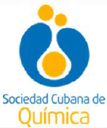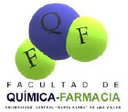
7th International Chemistry Symposium
SIQ 2019
Human papillomavirus (HPV) has been implicated in 99.7% of cervical squamous cell cancer cases (CCU) worldwide. HPV16 and HPV18 are known to cause around 70% of CCU. In particular, the genotype 18 (HPV-18) is the second most prevalent worldwide and it has been included in the commercial preventive vaccines against HPV; which are based on the antigenicity of the major capsid protein L1. These vaccines are highly expensive and are unavailable for the most needed populations in developing countries, like in Cuba, where a wide distribution of oncogenic HPV genotypes has been identified. At present, new vaccine candidates against HPV are being developed from alternative hosts such as Escherichia coli. In this work, the full-length HPV-18 L1 gene, isolated from a Cuban patient sample, was subcloned into an expression vector containing the T7lac promoter. Subsequently, the production of L1 protein was evaluated in three strains of E. coli with marked genetic differences (BL21 (DE3), Origami (DE3) and Rosetta (DE3) pLysS). In cell extracts of the evaluated strains, a band with a size close to the theoretical molecular weight of L1 protein was detected, which was recognized by the monoclonal antibody CamVir-1 anti-HPV-16 L1 and corroborated its identity as HPV-18 L1 protein. E. coli BL21 (DE3) produced at least two times higher amounts of L1 protein than E. coli Origami (DE3), while E. coli Rosetta (DE3) pLysS produced the lowest levels.
Human papillomavirus (HPV) has been implicated in 99.7% of cervical squamous cell cancer cases (CCU) worldwide. HPV16 and HPV18 are known to cause around 70% of CCU. In particular, the genotype 18 (HPV-18) is the second most prevalent worldwide and it has been included in the commercial preventive vaccines against HPV; which are based on the antigenicity of the major capsid protein L1. These vaccines are highly expensive and are unavailable for the most needed populations in developing countries, like in Cuba, where a wide distribution of oncogenic HPV genotypes has been identified. At present, new vaccine candidates against HPV are being developed from alternative hosts such as Escherichia coli. In this work, the full-length HPV-18 L1 gene, isolated from a Cuban patient sample, was subcloned into an expression vector containing the T7lac promoter. Subsequently, the production of L1 protein was evaluated in three strains of E. coli with marked genetic differences (BL21 (DE3), Origami (DE3) and Rosetta (DE3) pLysS). In cell extracts of the evaluated strains, a band with a size close to the theoretical molecular weight of L1 protein was detected, which was recognized by the monoclonal antibody CamVir-1 anti-HPV-16 L1 and corroborated its identity as HPV-18 L1 protein. E. coli BL21 (DE3) produced at least two times higher amounts of L1 protein than E. coli Origami (DE3), while E. coli Rosetta (DE3) pLysS produced the lowest levels.
About The Speaker

Dr. Elsa Pimienta






